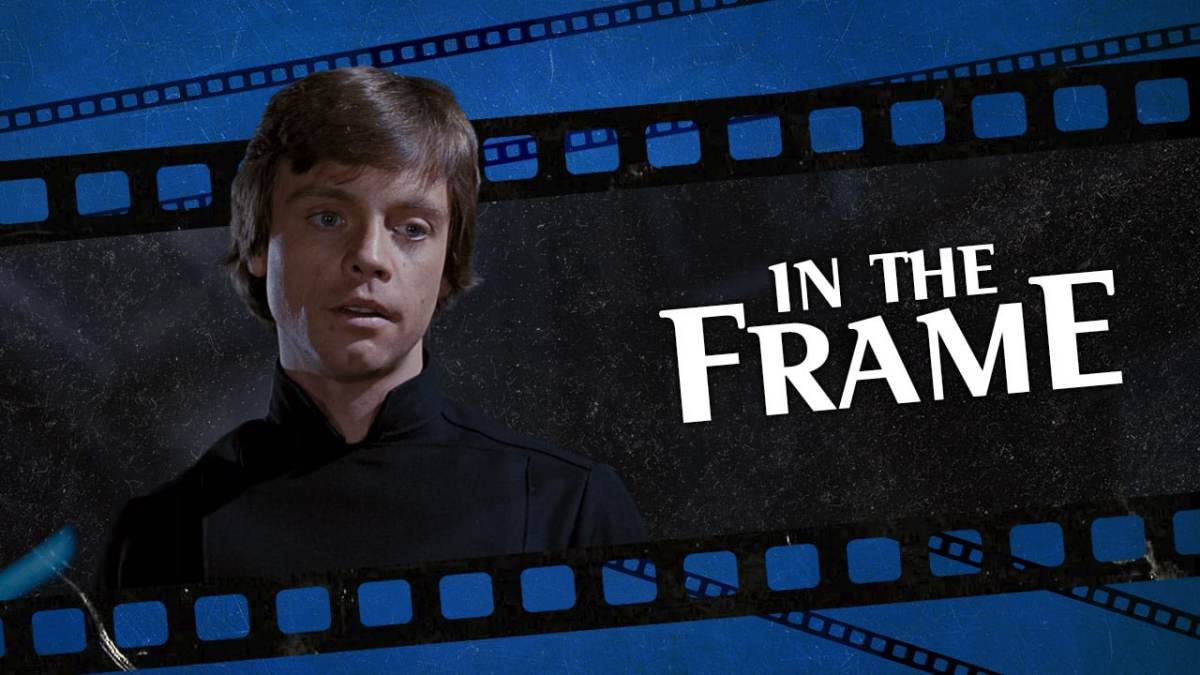For better and for worse, Return of the Jedi gave us the Star Wars that fans have today.
When critics discuss the history of beloved properties, they tend to fixate on milestones. These key moments are often framed in terms of the first instance of something — the first time that a particular character appears, the first time that a particular line is used, the first time that a particular piece of continuity is mentioned. Of course, curative fandom will then compile lists that chart the recurrence of those characters, lines, and pieces of continuity across the length and breadth of the series.
However, it is often just as important to look at the point where a particular aspect of a franchise ceases to be unique, where a particular creative choice stops being a once-off occurrence. While the episodes and films that introduce key elements to a franchise are important, critics often overlook the importance of the installments that repeat and reiterate those same elements. After all, recurring elements only become essential to a franchise’s identity through the act of repetition.
This explains why Return of the Jedi is such a formative and influential Star Wars film. After all, The Empire Strikes Back was a bold and provocative sequel for the time. It challenged the expectations of a fanbase, pushing the boundaries of what Star Wars could be. It adopted a completely different structure, it split the cast up, it took the audience to entirely different worlds. It radically rewrote the franchise’s continuity. The Empire Strikes Back pushed Star Wars outwards, in bold new directions.
The modern Star Wars franchise has turned inwards, embracing nostalgia; The Force Awakens effectively mirrored the structure of the original Star Wars, while The Rise of Skywalker resurrected Emperor Palpatine for no reason, and even The Mandalorian has spent more time on Tatooine than the original trilogy. Disney has even made nostalgic pandering part of the marketing, with the trailer for The Lego Star Wars Holiday Special promising that “the past is the best present.”

The franchise’s gaze backward and obsession with the past really begins with Return of the Jedi. A large amount of the movie is directly recycled from the original Star Wars. This is obvious even from the opening shot, which features a Star Destroyer entering the frame from above — apparently a suggestion of director Richard Marquand. The film borrows other shots directly, including one of Luke (Mark Hamill) and Leia (Carrie Fisher) swinging together across a chasm.
The opening act of Return of the Jedi once again finds R2-D2 (Kenny Baker) and C-3PO (Anthony Daniels) wandering through the Tatooine desert, R2-D2 carrying another vitally important holographic message. The closing scenes find the characters gathered around an Ewok bonfire to celebrate their victory with no thought of what comes next, recalling the triumphalist medal ceremony in the original film. (Chewbacca would have to wait another 36 years for his medal.)
While The Empire Strikes Back avoided any massive space battles and front-loaded its battle scenes, Return of the Jedi closes with a gigantic space dogfight like the original film in the series. This is where codification becomes important. There were no real gigantic space battles in The Empire Strikes Back, but after Return of the Jedi they became part of the Star Wars template: Every subsequent live-action film except Revenge of the Sith and Solo features an epic third act battle involving fighters.
Even the characters in the film seem aware of this repetition. The original Star Wars ended with the destruction of the Death Star, a catastrophic loss for the Galactic Empire. In Return of the Jedi, the Emperor has commissioned another Death Star. There is no real indication why the second Death Star needed to be larger beyond the idea of repetition and escalation; the original could destroy planets. This Death Star has shafts so large that entire ships can reach the core.

The second Death Star almost feels like a metaphor for what Return of the Jedi is doing — repeating the beats of the original Star Wars, just louder and more confidently. The Death Star becomes another part of the Star Wars template, evoked with Starkiller Base in The Force Awakens and with the superweapons on the Star Destroyers in The Rise of Skywalker. Obviously, the Death Star is part of the iconography of the original Star Wars, but Return of the Jedi demonstrates it’s reproducible.
The internal logic of Return of the Jedi is best articulated as “again, but bigger” and best expressed by Jabba the Hutt. The film establishes early on that Jabba the Hutt deals with his problems by feeding them to the Rancor, effectively throwing them into a pit with a monster. When Luke kills the Rancor, Jabba decides that the logical course of action is to deal with Luke and his allies by feeding them to the Sarlacc, effectively throwing them into a deeper pit with a bigger monster.
As if to reinforce this theme of repetition, C-3PO even narrates the events of the original Star Wars for the Ewoks. As such, Return of the Jedi literalizes this idea of repetition within the franchise. The most charitable reading of all this is to suggest that Lucas was trying to solidify the sense of the Star Wars franchise as a Campbellian epic defined by echoes and rhymes. It is “like poetry,” to quote a meme. However, the nature of the film’s production suggests that this repetition was driven by less artistic considerations.
There’s a certain cynicism to Return of the Jedi. Lucas vetoed a more ambiguous ending discussed with producer Gary Kurtz, as well as a dark ending Lucas himself described to screenwriter Lawrence Kasdan, pushing for the path of least resistance and most profitability. According to Harrison Ford, Lucas vetoed killing off Han Solo because he “didn’t think there was any future in dead Han toys.” Lucas would part ways with Kurtz during production, Kurtz arguing that Lucas was motivated by toy sales rather than artistic integrity.

There was a palpable sense that Lucas just wanted the movie to be done. The film was produced while George Lucas was going through a divorce from his wife Marcia Lucas, who worked as an editor on all three films and contributed an incredible amount to their success. More than that, Lucas was creatively exhausted. “It’s been ten years, ten years, since I started this,” he told Rolling Stone. “There are things I always wanted to do that I never really had a chance to do.”
Lucas was also perhaps scarred by the experience on The Empire Strikes Back. He had taken out a massive loan to finance the film, and it ran “way over budget, way over schedule.” This perhaps inspired Lucas to set a much tighter production schedule for Return of the Jedi, which was six weeks shorter than the one for The Empire Strikes Back. This may also have influenced the choice of Richard Marquand as director, whose directorial style was “to keep it as simple as possible.”
Similarly, the gap between The Empire Strikes Back and Return of the Jedi demonstrated other challenges to Lucas’ possible future plans for Star Wars. Although he did eventually return, Harrison Ford had initially suggested he might not sign on for the third film in the franchise. Given that Lucas had been considering another three films built around these characters, that near-miss might also have sapped his enthusiasm for any Star Wars beyond Return of the Jedi.

This might explain why Return of the Jedi followed so many paths of least resistance. Leia was not even originally meant to be Luke’s sister: Her biggest character beat was thrown into the film when Lucas abandoned plans to make more Star Wars movies. This may also explain why so much of Return of the Jedi feels like a rehash of the original Star Wars. Its production suggests a clear intention to generate what might be described as Star Wars “content,” empty product with brand recognition.
To be clear, there is a lot to love about Return of the Jedi, such as the slyly subversive Ewoks. The film is a rollicking adventure. The Battle of Endor remains one of the most impressive spectacles that the franchise has ever mounted. The characters and actors remain charismatic. However, there’s no escaping the sense that Return of the Jedi marks an outer limit of what Star Wars can be. It sets a boundary on the franchise, after The Empire Strikes Back had pushed out so strongly.
In repeating so much of the original Star Wars, it was Return of the Jedi that codified what Star Wars could be: deserts, droids, dogfights, and Death Stars. It’s no small irony that in his effort to seemingly be done with the franchise, Lucas reduced it to a repeatable formula. Much of the franchise that would follow would just become reiterations of this reiteration. Perhaps Admiral Ackbar (Tim Rose, voice by Erik Bauersfeld) was right when he noticed that “it’s a trap.”





